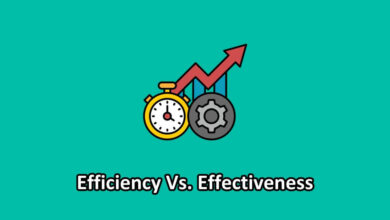Invention Vs Innovation: What’s the Difference?
In the fast-paced realm of technology and progress, the dance between invention and innovation takes center stage. Picture this: a spark in someone’s mind that ignites a revolution, propelling us into the future. This symbiotic relationship between invention and innovation is the heartbeat of progress, shaping the world we live in.
Invention and innovation, often used interchangeably, are distinct pillars driving technological evolution. Invention is the birth of a new idea or creation, while innovation is the transformation of that idea into something practical and impactful. Together, they propel societies forward, leaving an indelible mark on industries, economies, and cultures.
Invention Vs. Innovation (A Comparison)
| Invention | Innovation |
|---|---|
| Invention is the act of creating or discovering a new idea, process, device, or method that has not existed before, often involving a breakthrough in creativity or technology. | Innovation is the dynamic process of applying creativity and practicality to transform inventive ideas into real-world solutions, resulting in significant improvements to products, services, or systems. |
| The invention is the birth of a new idea or concept and marks the conceptual origin of creative thought or discovery. | Innovation is the entire process of bringing an idea to life, from development to implementation, encompassing planning, execution, and adaptation. |
| It is primarily focused on creating something new, often exploring uncharted territories of knowledge or technology. | It emphasizes the practical application and improvement of existing concepts, ensuring the idea's relevance and utility in the real world. |
| It sparks the initial idea but may not have immediate tangible impacts as it serves as the starting point for potential future changes. | It leads to tangible impacts, shaping industries and societies over time as innovation progresses through implementation and refinement. |
| Inventions lean heavily on creativity, exploring uncharted territories of imagination and intellectual pursuits. | Innovations balance creativity with practicality, ensuring that innovative solutions are not only imaginative but also applicable and beneficial in practical scenarios. |
| They require high levels of creativity and a deep understanding of specific fields, often involving groundbreaking thinking. | They involve a broader skill set, including creative thinking, but also necessitate skills in project management, market analysis, and adaptability. |
| Invention typically happens in a moment of inspiration or as a response to a specific problem, often driven by individual inventors or small teams. | Innovation takes place throughout the entire process of idea development, implementation, and improvement, requiring continuous effort and collaboration. |
What is Invention?
Invention is the birthing process of novel ideas and creations. It’s the moment of inspiration when an individual or a group pioneers something entirely new. From groundbreaking technologies to revolutionary concepts, inventions are the raw building blocks of progress.
Characteristics of Invention
- Creativity Unleashed: Inventions often stem from a burst of creativity, challenging the norms and envisioning the unexplored.
- Problem-solving Prowess: Inventions address existing issues or needs, demonstrating a knack for solving real-world problems.
- Uncharted Territory: They venture into uncharted territory, breaking away from the familiar and forging new paths of exploration.
What is Innovation?
Innovation is the metamorphosis of inventive ideas into tangible and impactful realities. It’s about implementation, improvement, and adaptation, turning concepts into practical solutions. Unlike invention, innovation involves a broader spectrum, including refinement and application.
Characteristics of Innovation
- Implementation Mastery: Innovation excels in the practical application of inventive concepts, transforming ideas into functional solutions.
- Adaptability and Improvement: Constant refinement and adaptation are at the core of innovation, ensuring relevance in dynamic environments.
- Market Integration: Successful innovation navigates its way into the market, addressing consumer needs and shaping industries.
Key Differences Between Invention and Innovation
- Nature of Process: Invention is the birth of a new idea, while innovation is the entire process of bringing that idea to life, from development to implementation.
- Focus on Creation vs. Application: Invention focuses on creating something new, while innovation emphasizes the practical application and improvement of existing concepts.
- Timeline of Impact: Invention sparks the initial idea, but innovation leads to tangible impacts, shaping industries and societies over time.
- Creativity vs. Practicality: Invention leans heavily on creativity, exploring uncharted territories, while innovation balances creativity with practicality, ensuring real-world utility.
- Scope of Impact: Invention lays the groundwork, but it’s an innovation that permeates industries, economies, and societies, leaving a lasting impact.
Common Misconceptions
The common misstep of using ‘invention’ and ‘innovation’ interchangeably arises from their close association. However, recognizing their unique roles is crucial for understanding their distinct impacts on progress.
In the evolutionary cycle of progress, invention often acts as the catalyst that initiates change. When inventive ideas are harnessed, refined, and brought into the real world, innovation flourishes.
Innovation doesn’t always require the creation of something entirely new. It can involve reimagining existing concepts, improving processes, and finding novel applications for established ideas.
Impact on Industries and Societies
Both invention and innovation play pivotal roles in driving economic growth. Inventions open new avenues, and innovations turn them into lucrative opportunities, fostering a cycle of economic development.
Beyond economics, the synergy between invention and innovation shapes societies and cultures. New inventions spark societal shifts, and innovations weave these changes into the fabric of daily life, influencing norms, values, and interactions.
Together, invention and innovation form the backbone of progress. Inventions are the seeds, and innovations are the flourishing trees that provide shade to societies, enabling them to adapt, grow, and thrive.
Conclusion
In summary, while invention births ideas, innovation brings them to life. Understanding their differences is crucial for appreciating their combined impact on our ever-evolving world. Invention and innovation, symbiotic partners, drive the wheels of progress.
Their collective influence shapes the trajectory of societies, steering them toward brighter and more advanced futures.
Let’s embrace a holistic perspective, acknowledging the creative sparks of invention and the transformative power of innovation. Together, they propel us into a future where possibilities are limitless, and progress is perpetual.



